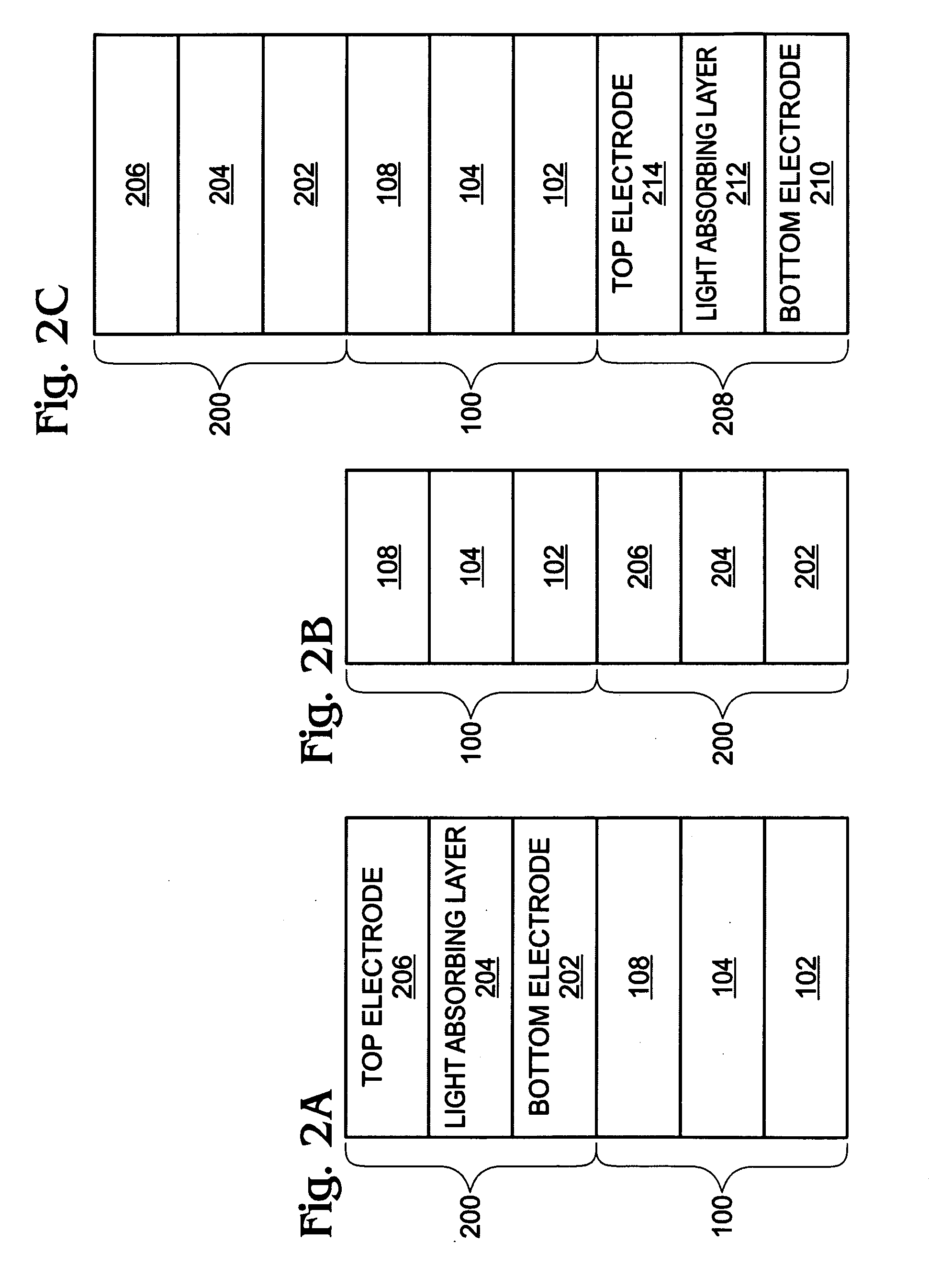Silicon Oxide-Nitride-Carbide with Embedded Nanocrystalline Semiconductor Particles
a silicon oxide and nano-carbide technology, applied in the solar field, can solve the problems of low plasma density, low ion/neutral ratio, low power coupling to the plasma, and inefficient pecvd and sputtering techniques, and achieve enhanced plasma reaction kinetics, high-density plasma characteristics, and minimizing plasma induced bulk and interface damage.
- Summary
- Abstract
- Description
- Claims
- Application Information
AI Technical Summary
Benefits of technology
Problems solved by technology
Method used
Image
Examples
Embodiment Construction
[0036]FIG. 1 is a partial cross-sectional view of a solar cell. The solar cell 100 comprises a bottom electrode 102 doped with either an n-type or p-type dopant. A SiOxNyCz thin film 104 overlies the bottom electrode 102, where x, y, z≧0. The SiOxNyCz thin film 104 has a bandgap in the range of about 1.9 to 3.0, and is embedded with semiconductor nanoparticles 106, which may be Si, Ge, or a combination of Si and Ge. In one aspect, the semiconductor nanoparticles 106 have a size in the range of 1 to 20 nanometers (nm). A doped top electrode 108 overlies the SiOxNyCz thin film 104. If the bottom electrode 102 is n-doped, the top electrode 108 is p-doped. Alternately, if the bottom electrode 102 is p-doped, the top electrode 108 is n-doped.
[0037]In one aspect, the SiOxNyCz thin film 104 is either a doped or an intrinsic material. For example, the SiOxNyCz thin film 104 may be embedded with a dopant such as a Type 3, Type 4, Type 5, or rare earth elements. The use of such a dopant may a...
PUM
| Property | Measurement | Unit |
|---|---|---|
| Temperature | aaaaa | aaaaa |
| Temperature | aaaaa | aaaaa |
| Pressure | aaaaa | aaaaa |
Abstract
Description
Claims
Application Information
 Login to View More
Login to View More - R&D
- Intellectual Property
- Life Sciences
- Materials
- Tech Scout
- Unparalleled Data Quality
- Higher Quality Content
- 60% Fewer Hallucinations
Browse by: Latest US Patents, China's latest patents, Technical Efficacy Thesaurus, Application Domain, Technology Topic, Popular Technical Reports.
© 2025 PatSnap. All rights reserved.Legal|Privacy policy|Modern Slavery Act Transparency Statement|Sitemap|About US| Contact US: help@patsnap.com



